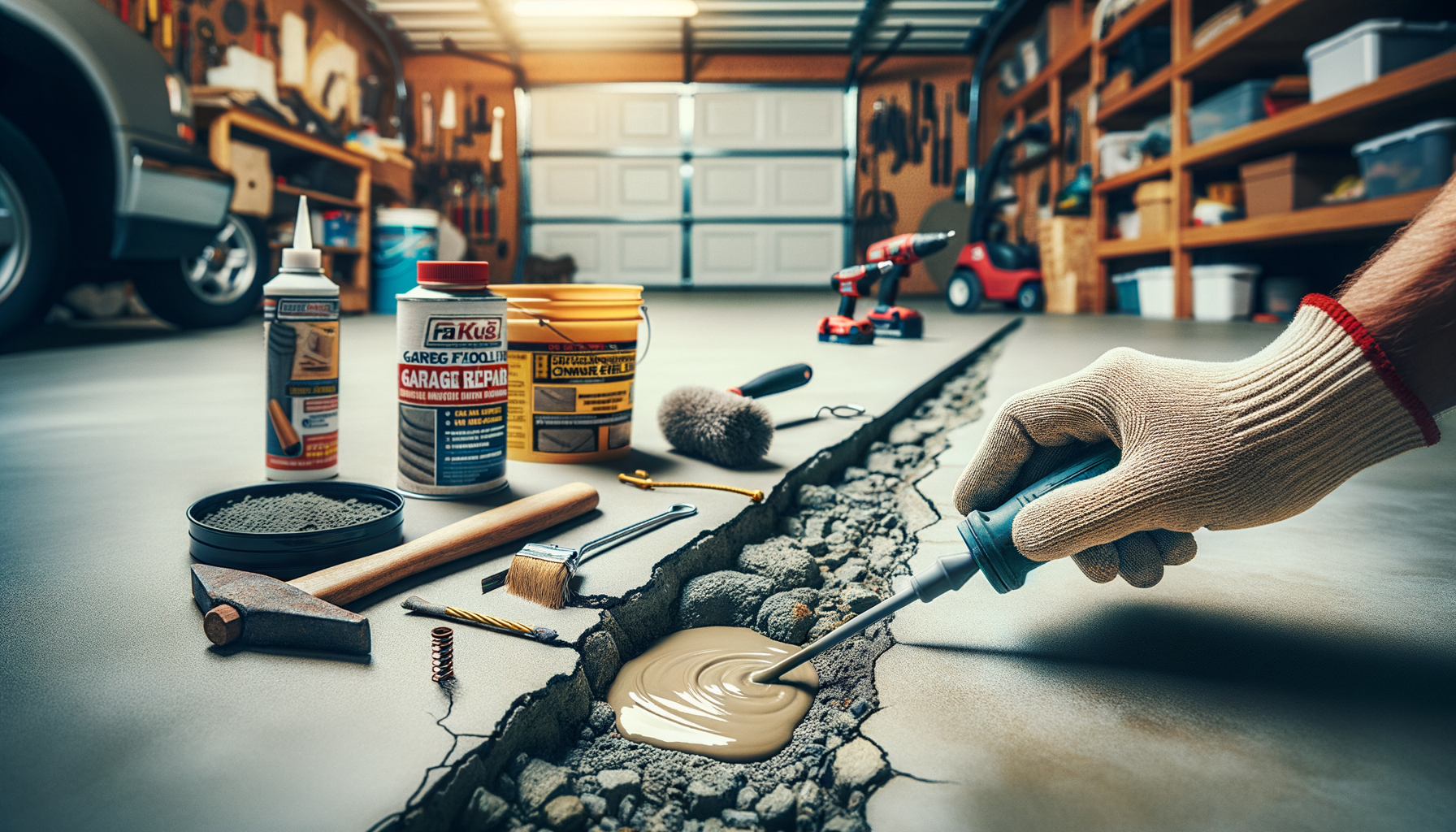Understanding Garage Floor Cracks
What Causes Garage Floor Cracks?
-
Temperature Changes
- When it’s cold, water in the concrete can freeze and expand, making cracks.
-
Bad Construction
- If the concrete wasn’t mixed well or dried properly, it can crack.
-
Foundation Settling
- The ground under the garage can sink, causing cracks in the concrete.
-
Heavy Loads
- Too much weight from cars or storage can cause the concrete to crack.
Types of Garage Floor Cracks
-
Hairline Cracks
- These are very thin and might not be serious but can get bigger.
-
Shrinkage Cracks
- Happen when the concrete dries and shrinks, usually not a big problem.
-
Settlement Cracks
- Caused by the ground underneath settling.
-
Structural Cracks
- These are serious and may need a professional to look at them.
Why Fixing Garage Floor Cracks is Important
Prevent More Damage
-
Cracks can get bigger
- If you don’t fix small cracks, they can grow and cause more trouble.
-
Water can cause more problems
- Water can get into cracks, freeze, and make the cracks worse or damage the ground underneath.
Look Better
- A smooth floor looks nice
- It makes your garage and property look better.
Make Your Garage Last Longer
- Stops bigger, more expensive repairs
- Fixing cracks now can save money by avoiding worse damage later.
Tools and Materials Needed for Garage Floor Crack Repair
Tools
- Hammer and chisel
- Wire brush
- Caulking gun
- Putty knife
- Concrete mixer (optional)
Materials
- Concrete repair mix or epoxy filler
- Bonding adhesive
- Sand or gravel for bigger cracks
- Sealer for finishing
Step-by-Step Guide on How to Fix Garage Floor Cracks
-
Look at the Cracks
- See how big and what kind of cracks you have. Mark the ones you need to fix.
-
Get the Cracks Ready
- Clean out bits of dirt and dust with a wire brush or vacuum. Use a hammer and chisel to make narrow cracks a bit wider.
-
Apply Bonding Adhesive
- Put on the adhesive to help new concrete stick to the old concrete.
-
Fill the Cracks
- For small cracks, use a caulking gun to put in epoxy filler. For bigger cracks, mix concrete repair stuff, fill the crack, and smooth it with a putty knife.
-
Make the Surface Even
- Use a putty knife to make sure the filled crack is flat with the floor.
-
Let It Dry
- Let the patch dry according to the instructions.
-
Seal the Repair (Optional)
- You can put on a concrete sealer to protect the fix and stop future cracks.
Maintenance Tips to Prevent Garage Floor Cracks
Control Moisture
-
Use dehumidifiers
- Keeps the moisture down and stops cracks.
-
Fix any leaks
- Don’t let water into your garage from the roof or walls.
Regular Cleaning
-
Keep the garage clean
- Sweep and clean often to spot and fix small cracks before they get bigger.
-
Clean up spills fast
- Stops liquids from sinking into the concrete and causing damage.
Distribute Weight
-
Spread out heavy loads
- Don’t put too much weight in one spot to avoid stress on the floor.
-
Use rubber mats under heavy things
- Helps to cushion and prevent cracks.
When to Call a Professional for Fixing Garage Floor Cracks
Lots of Cracks
- Too many or very big cracks
- Sometimes you need a pro if there are lots of cracks or if they are very wide.
Drainage Problems
- Water pooling
- If water is collecting, you might have a bigger issue that needs an expert.
Structural Issues
- Foundation problems
- If the floor is settling or there are gaps around the base of walls, call a pro to check it out.
By following these simple steps, you can fix cracks in your garage floor and keep it in good shape.
For more help and advice, check out Foundation Repair Canada!


Leave a Reply